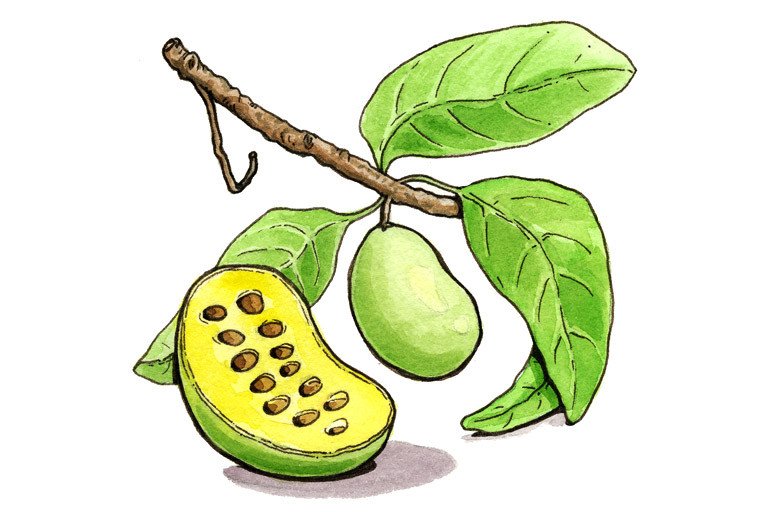
Common Names
- False banana
- Pawpaw apple
- Custard banana
- Poor man's banana
- Hoosier banana
For Patients & Caregivers
Tell your healthcare providers about any dietary supplements you’re taking, such as herbs, vitamins, minerals, and natural or home remedies. This will help them manage your care and keep you safe.
What is it?
Pawpaw is toxic to some cancer cells, but such effects have not been shown in humans.
Asimina triloba, commonly known as pawpaw, is native to North America and has edible bean-shaped fruits. The plant extract is used in anti-lice shampoo and in pesticides.
The major components of pawpaw are compounds known as acetogenins. They prevent the cell from making ATP, an important energy source. In lab studies, the extract killed cancer cells resistant to commonly used chemotherapy drugs such as adriamycin. It also appeared to be more toxic to cancer cells than to normal cells. However, studies on these effects have not been conducted in humans.
What are the potential uses and benefits?
- To treat lice
Pawpaw extract has been shown to be effective as an anti-lice shampoo. - Cancer treatment
Test tube studies suggest pawpaw may have activity against cancer cells, but experiments in mice produced conflicting results. There are no published clinical studies in humans that test safety or effectiveness of pawpaw as a cancer treatment.
What are the side effects?
- Allergic reactions
- Nerve toxicity
- Vomiting
Case report
Neurodegenerative disease: In an 80-year-old white man who complained of effortful speech and mild balance impairment, possibly related to long-term consumption of pawpaw fruit.
What else do I need to know?
Patient Warnings:
Pawpaw fruit contains high concentrations of annonacin, which is toxic to nerve cells. In addition there have been case reports of possibly related nerve toxicity. Therefore, chronic use should be avoided.
Do Not Take if:
- You are pregnant.
Special Point:
- There are several Web sites that promote pawpaw as an effective treatment for cancer. However, there is very little scientific evidence to support such claims.
- Pawpaw should not be confused with graviola, also known as Brazilian pawpaw, or with papaya, another fruit with a similar texture and appearance.
For Healthcare Professionals
Scientific Name
Clinical Summary
Asimina triloba, commonly known as pawpaw, is native to North America and has edible bean-shaped fruits.
In vitro studies show that pawpaw extract has cytotoxic effects against cancer cell lines including those resistant to adriamycin (1), as well as antiangiogenic activity (9). Compounds known as acetogenins are thought to be the active constituents (2). Clinical studies have not been conducted.
Extracts of pawpaw twigs and leaves have been used in anti-lice shampoos (3) and as pesticides (4). Both the crude fruit extract and annonacin, a major constituent of pawpaw, cause neurotoxicity in vitro (10).
Asimina triloba should not be confused with graviola, also known as Brazilian pawpaw, or with papaya, another fruit with a similar texture and appearance.
Food Sources
Pawpaw fruit
Purported Uses and Benefits
- Lice
- Cancer
Mechanism of Action
Acetogenins, the active constituents of pawpaw fruit, inhibit Complex I of the electron transport chain and NADH oxidase, a protein in the plasma membrane (1). With the decrease in regenerable NAD, the ATP levels drop, leading to subsequent cell death by apoptosis.
In vivo experiments have demonstrated pawpaw’s cytotoxicity in mice (5). Pawpaw extract is also cytotoxic to multidrug-resistant cells in vitro, perhaps via inhibition of the P-170 glycoprotein, an efflux pump used by cells resistant to drugs like adriamycin (1).
Annonacin, a major ingredient of pawpaw fruit, and the crude fruit extract are toxic to cortical neurons (10).
Warnings
Pawpaw fruit contains high concentrations of annonacin, which is toxic to cortical neurons (10).
Contraindications
- Pregnancy